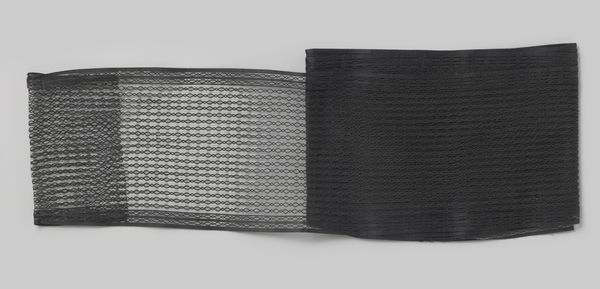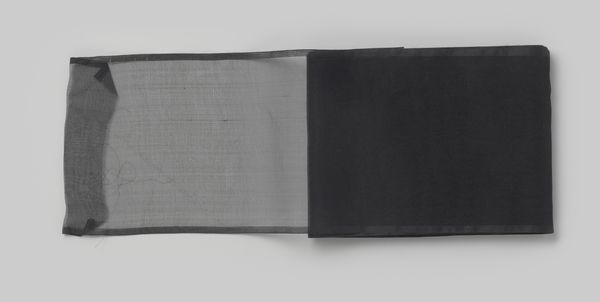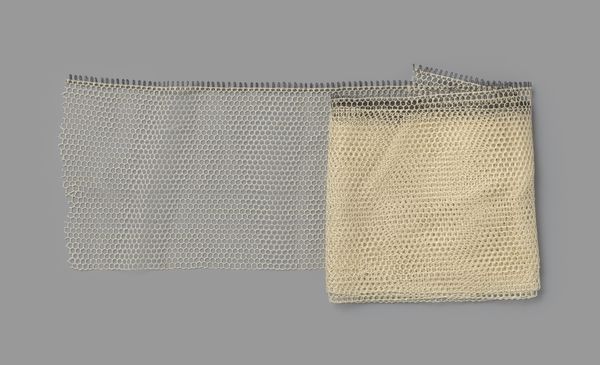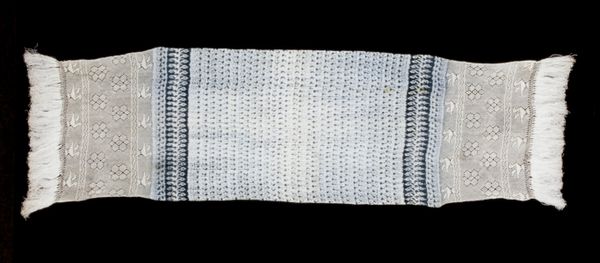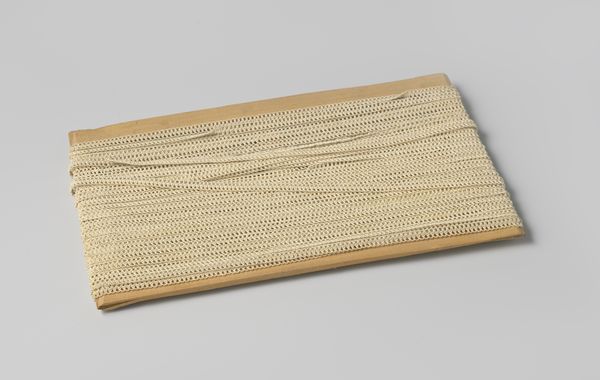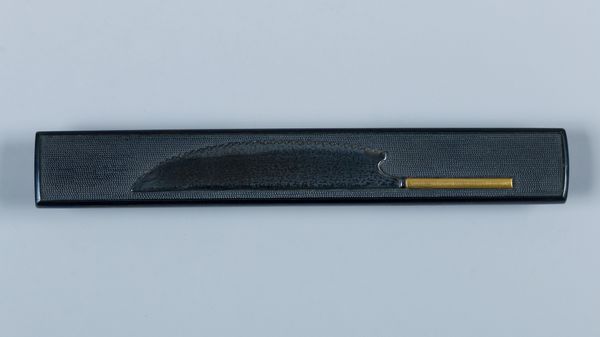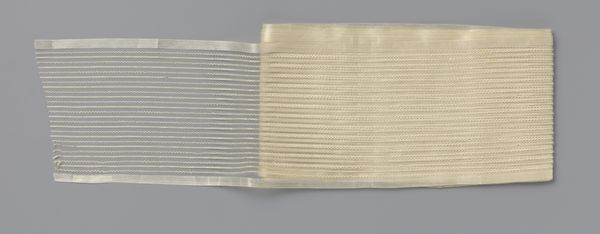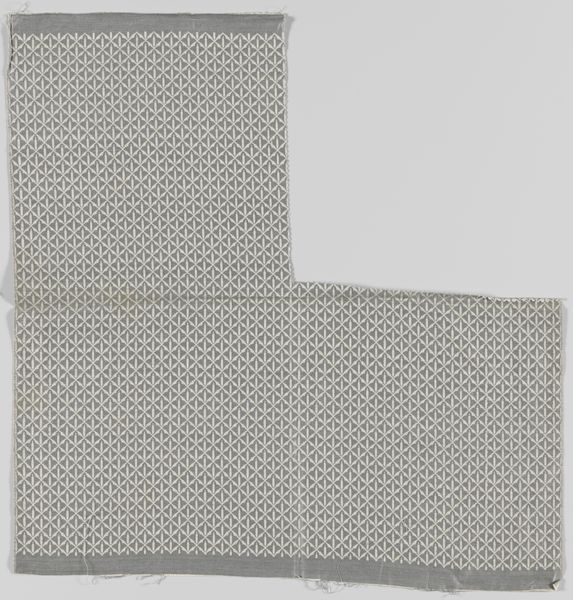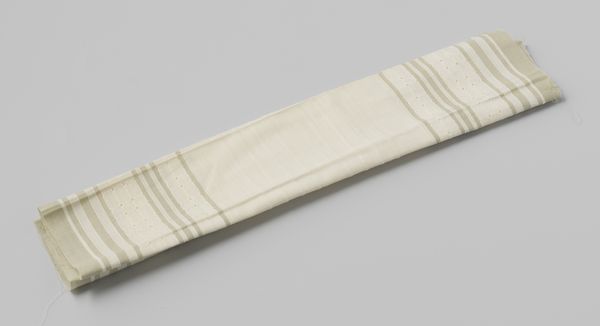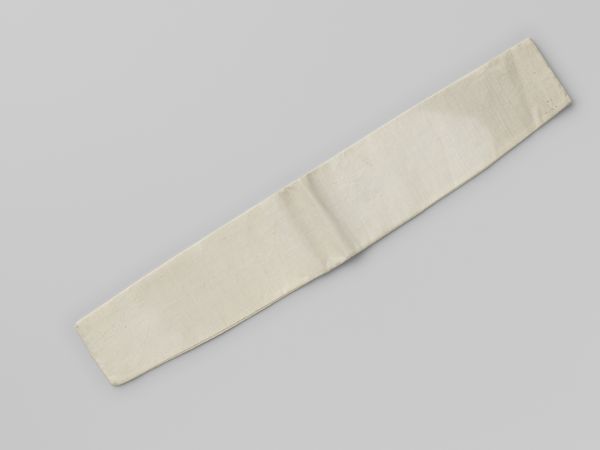
mixed-media, collage, textile, photography
#
fashion design
#
mixed-media
#
still-life-photography
#
collage
#
fashion mockup
#
product fashion photography
#
fashion merchandise
#
textile
#
photography
#
product design photgrpaphy
#
wearable design
#
product mock up
#
clothing photo
#
fashion sketch
#
clothing design
Dimensions: width 3.5 cm, length 12 cm, width 9.5 cm, height 1.5 cm
Copyright: Rijks Museum: Open Domain
Curator: The work we're looking at is entitled "Hout waarop een zwart lint van zijden tule", which translates to "Wood with a Black Ribbon of Silk Tulle." It's an early 20th-century mixed-media piece, created around 1900, housed in the Rijksmuseum. Editor: Immediately, the textures strike me. The roughness of the wood block, contrasted with the delicate weave of the tulle ribbon, it’s a fascinating interplay of vulnerability and sturdiness, wouldn’t you say? Curator: Absolutely. The materials speak volumes about the period. Tulle was a popular fabric in fashion then, symbolizing both luxury and a certain demureness, contained by conventions. And consider the support-- the plain wood seems to serve as a brutal ground for otherwise luxurious adornments. This tension makes me curious. Editor: The black tulle also resonates with the Victorian mourning aesthetic. Black was heavy with symbolism during this time and was an intentional display of status and emotionality within prescribed social contexts. Perhaps it comments on the artificiality of grief? Curator: That's a compelling point. Socially, we know this was a time of massive industrial change. Photography as a developing artform, combined with new capabilities in fabric manufacturing are colliding in the work, in interesting ways. Editor: Yes, the composition itself, presented as a photograph of what appears to be a mockup, offers a fascinating study in process, like capturing a fleeting moment of creation. Was this part of a design, do you think, for a fashion house? Or commentary on industrial output of art? Curator: That remains unclear but is definitely part of the appeal for art historians and fashion enthusiasts. The artist, Gustav Schnitzler, perhaps intentionally left that ambiguity in his art by using his own fashion training to leave some pieces deliberately unfixed. Editor: The image acts as a quiet testament to transient beauty and memory. In a strange way it seems to predict trends of found-object installation art that followed many years later. The work asks to be viewed across both timelines and traditions to better understand our attachment to these images, these ideas. Curator: Ultimately, it provides a glimpse into the socio-cultural context of the early 1900s, revealing emerging possibilities within production. Editor: An odd juxtaposition. And it prompts us to look for larger meanings, to question if this fabric, seemingly insignificant, in reality reveals something crucial about our world.
Comments
No comments
Be the first to comment and join the conversation on the ultimate creative platform.
